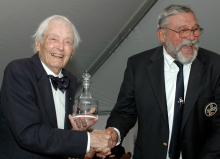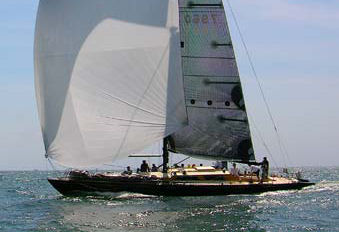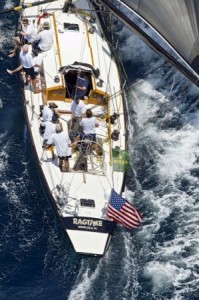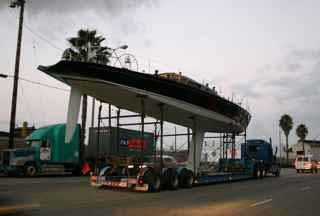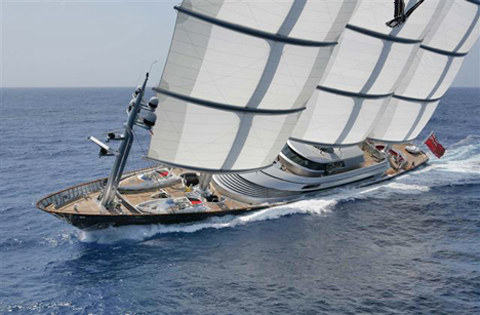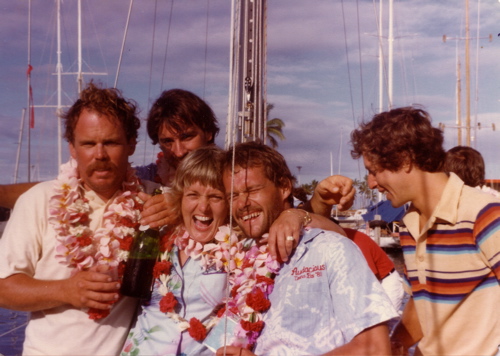I have been working on a history of the Cal 40, the first fiberglass sailboat that was a successful racer. In 1963, racing sailboats were custom boats built generally in wood and affordable only for wealthy men, and a few women. That year, a new boat appeared which, for the next nine years, dominated racing, especially offshore racing in which men and their boats matched themselves against the sea. One design racing had been popular since the Star class was organized in 1912. The Star is still popular but it is not intended to go offshore or to race long distances. It is a daysailer and the courses for the races are inshore and usually a closed course. Class racing is based on a design rule in which boats are intended to be as nearly identical as possible. The Cal 40 was different. For one thing, it cost $17,000 dollars. That was a sail budget for one of the custom boats.

“The following is from an article that appeared in Sailing Magazine:
When the selection committee of the American Sailboat Hall of Fame considered boats for induction this year, one boat was an instant consensus pick. No question, no argument, no doubt. No wonder–it was the Cal 40, the boat that changed everything.
When I assigned a young staff member to write a profile of the Cal 40 and told him that when it was introduced in 1963 it was considered a radical and possibly dangerous racing design, he gave me one of those “jeez, he’s lost it” looks. I couldn’t blame him. The Cal 40 doesn’t have the predatory look of today’s ocean racers, no angles, sharp edges or towering fractional rig. But, make no mistake, it was a predator, one that preyed on conventional thinking.
The Cal 40’s gently dipping sheerline, curve spoon-bow, counter stem and squatty sailplan gave it a deceivingly soft appearance. But there was nothing soft below the waterline. In an era of wineglass-shaped hulls with deep, stack bilges, the Cal 40 had a shallow dinghy-like hull with firm cheeks. The keel was a fin. The rudder-gasp!-was not attached to the keel, and this was heresy.
Conventional wisdom made the rudder a hinged extension of the keel. On the Cal 40 it was a freestanding spade at the end of the waterline. What it did back there was to give the helmsman exquisite control of the boat, particularly in fast off-wind sailing. Perhaps the reason it had not appeared earlier on big boats was that offshore boats of the time were rarely in danger of going fast enough to need a spade rudder.
The Cal 40 needed it. While other displacement boats were at the mercy of the law of hull speed, the Cal 40 thumbed its nose at it. The shape of the hull and its appendages combined with relatively light weight gave the boat the ability to get up on the waves and surf. Sailing 40-foot boat had never been so thrilling. Just how thrilling was evident in a photo that appeared on the cover of a new magazine called SAILING in 1969. Our covers weren’t glossy then; they weren’t even printed in color. But the cover, featuring the Cal 40 Melee, is still one of my favorites.
The boat, embraced in great plumes of pure white spray, is locked onto an enormous wave, surfing to the finish of the Miami-Nassau Race. Though the wind is so strong the boat is carrying a poled-out genoa instead of a spinnaker, the three visible crew members look nonchalant as they enjoy the ride of their lives on a boat that is in perfect control.
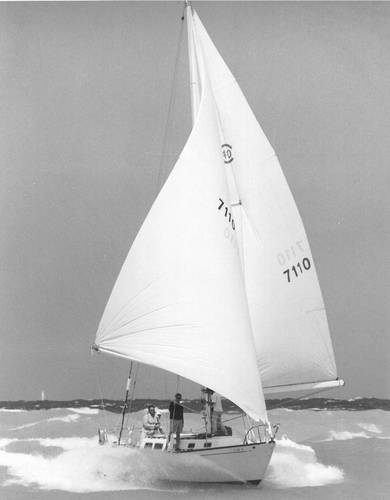
Sailors like to cultivate a swashbuckling image, but as an establishment they tend to be conservative. And so when the Cal 40 appeared it was ridiculed as some sort of wacky California take on sailboat design and criticized as unseaworthy. The rudder would break off; the keel would drop off; the hull would fail.
None of that happened; there was no chance of it happening. The Cal 40 was a carefully engineered, strongly built fiberglass yacht. It was only somewhat lighter than other 40-footers but the difference was accentuated by its long waterline, which yielded a displacement/length ratio of 250 at a time when the norm was more like 330.
The boat was thought of as a downwind machine, but in fact it was an all-around boat, fast on any point of sail. The best indication of that is that Cal 40s won both the Transpac Race, mostly a surfing contest, and the Bermuda Race, usually an upwind slog. In the 1966 Bermuda Race, five of the first 15 places overall were won by Cal 40s. Cal 40s won three consecutive Transpacs in 1965, ’66 and ’67. Incredibly, 22 years after it was designed, a Cal 40 won the 1985 Transpac.
No production boat has ever dominated racing the way the Cal 40 did, yet it would be wrong to classify it as a pure racer. Classify it instead as, simply, a good boat. Long after its racing heyday, the Cal 40 delights its owners as a safe, comfortable, easy-to-handle offshore cruising boat.
The Cal 40 was not chosen for the Hall of Fame because of its racing record. It was chosen because it propelled big-boat sailing to the future. Sailboat design was progressing in microscopic increments until the Cal 40 took it on a great leap forward. It leapt so far that today’s fastest racing boats are refined Cal 40s with fin keels, spade rudders and shallow hulls, free of rule induced distortions. They are far more sophisticated in many ways than the Cal 40, but you could say that, essentially, they were designed 33 years ago.
The designer of the Cal 40 is Bill Lapworth. His creation now has a place in the American Sailboat Hall of Fame and he, retired and living in Virginia, has, in the minds of knowing sailors at least, a place in the pantheon of the world’s most influential sailboat designers. There are some revered names in that group, but Lapworth may be the only one about whom it can be said — he changed everything.
— Bill Schanen
Editor and Publisher, Sailing Magazine”
These boats were so successful that, in 1972, the Ocean Racing Rule was changed and the Cal 40 was no longer competitive. Over the next ten years, the racing world returned to the realm of the rich man who could spend hundreds of thousands of dollars on boats that were uncomfortable, unsuitable for anything but racing and quickly obsolete as the designers found new loopholes in the Rule. This trend culminated in the disaster of the 1979 Fastnet Race, in which unstable boats were “caught out” in a severe storm in the English Channel. The result was the loss of boats and lives. Olin Stephens, a famous designer who had a hand in the rule change in 1972, later said that they had made a mistake in the new rule. The material that boats were made of had changed from wood, which was well understood from centuries of experience, to new materials. As a result, the rule had not taken sufficient notice of the “scantlings” factor. How strong was the hull and what the limits of design stability were in this new material. Stephens regrets that they did not consider this factor more carefully.
The Cal 40 was built, not only to win races, but to carry the crew in safety and relative comfort. Now, 40 years later, they are still sailing and still winning races. Ironically, Stephens, himself, at the age of 90, recently awarded a trophy to a 40-year-old Cal 40 for winning modern races competing against modern designs.
I will post the story of the restoration of my own Cal 40 on a separate page of this blog.

